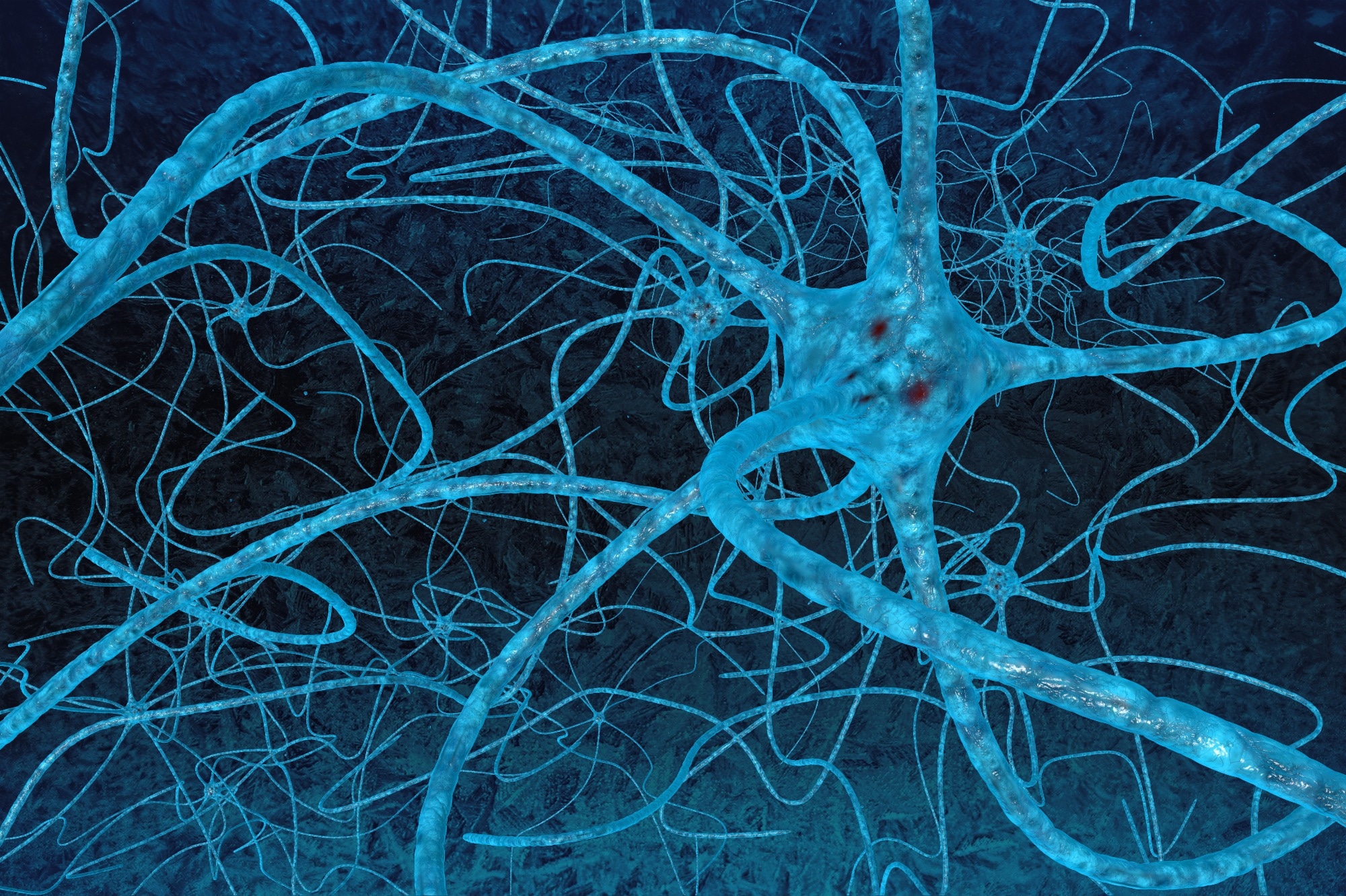The study offers valuable insights into how sensory cues are processed and information moves through the neuronal network, opening new pathways to a deeper understanding of the mammalian brain.
Study: Neuronal wiring diagram of an adult brain. Image Credit: vitstudio / Shutterstock.com
In a recent study published in Nature, researchers map the whole brain of Drosophila melanogaster, or the fruit fly, which comprises about 140,000 neurons and over 50 million synapses.Advancements in mapping the brain
Brains are vital for the evolution of complex behaviors; however, technological limitations have prevented scientists from mapping the connections within and between different regions of the brain at the neuronal and synaptic levels. Nevertheless, rapid advancements in imaging techniques like electron microscopic brain imaging have allowed scientists to create detailed wiring diagrams of animal brains.
Recent neurobiological studies on Drosophila melanogaster or fruit flies have identified over 100,000 neurons and about 100 million synapses involved in the control of movement, vision, and social interactions in the brain. These observations have provided important insights into various behaviors in fruit flies such as navigation, sensory processing, and memory, providing valuable insights into the mammalian brain.
About the study
The present study was conducted by a large team of researchers including various scientists from Princeton University and The FlyWire Consortium. The FlyWire Consortium is a large group of neurobiologists, proofreaders, and computer scientists using artificial intelligence and imaging tools to build and curate the first Drosophila whole-brain connectome.
These researchers expanded current knowledge of the adult Drosophila melanogaster brain by presenting a complete diagram of the neuronal wiring of the brain of a female adult fruit fly. Various advanced methods were utilized to analyze brain data, including electron microscopy imaging of one-week-old female fruit flies and neural networks to align images and segment the cells.
Previous brain models were used to segment neuropils, which are synapse-dense regions in the brain. The volume of each neuropil was calculated and neuropils were classified into different brain regions.
Synapses were then assigned to neuropils based on their locations. Any synapses that could not be matched to the exact neuropil were assigned to the nearest one within 10 micrometers.
The neuron segmentation was then reviewed and corrected by proofreaders to ensure data accuracy. Machine learning tools were also used to predict the types of synapses and identities of neurotransmitters.
To ensure that data was complete, proofreading was focused on neurons in the central brain with large synapse counts and visible nuclei. Neurons that underwent significant changes in the proofreading process were flagged for further review to ensure a thorough correction process.
Citizen scientists also contributed to annotating and categorizing neurons based on their connectivity and function. Various machine learning tools were then used to predict the neurotransmitter type at each synapse to understand communication pathways within the fruit fly brain.
Study findings
The researchers identified the connectome, which is a complete map of the adult female Drosophila melanogaster brain. A total of 139,255 neurons and 54.5 million synapses were identified, which provides valuable insights into the connections and communication between neurons.
This collaborative effort identified 8,400 cell types in the connectome, which is accessible through The FlyWire Consortium’s connectome data explorer. These findings also highlight important parts of the fruit fly brain, including the suboesophageal zone, which processes sensory data, as well as the optic lobes involved in vision.
The researchers also elucidated how neurons connect to the ventral nerve cord, which controls movement. Furthermore, the brain map provides a comprehensive image of the neurons involved in taste and touch.
The manual checks through proofreading ensured a 99.2% accuracy in the correct mapping of neurons. The current study also offers a novel method to study the flow of information in neuronal networks by ranking neurons based on their speed in processing sensory inputs.
Conclusions
The current study endeavor was a significant advancement as compared to previous efforts to map the brains of Drosophila larvae and the nematode Caenorhabditis elegans. Through the comprehensive neuronal map or connectome of the adult Drosophila brain, the researchers discovered novel pathways involved in the connectivity, communication, and functions of neurons within the brain.
The study findings provide critical insights into the processing of sensory cues and flow of information through the neuronal network, thereby paving the way toward a better understanding of the mammalian brain.
Journal reference:
- Dorkenwald, S., Matsliah, A., Sterling, A. R., et al. (2024). Neuronal wiring diagram of an adult brain. Nature 124-138. doi:10.1038/s41586-024-07558-y
Source link : News-Medica

